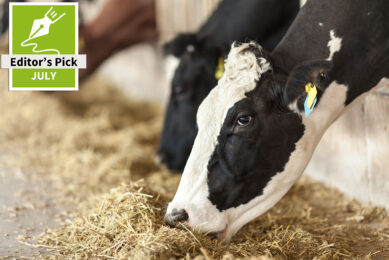Cutting hay waste in cattle feed
Research has shown that up to 43% of hay is lost when livestock is fed large round hay bales. Feeding should be limited to smaller amounts more offen.
According to Tim Tim Schnakenberg, an agronomy specialist with University of Missouri Extension, producers can minimise losses by following good management practices and rethinking the method by which they feed their stock.
One of the best ways to reduce losses is to feed hay in small amounts. "When this occurs cattle have less opportunity to trample hay and make it unappealing for consumption," said Schnakenberg.
"This requires some calculations of how much hay is needed per animal in the operation, factoring in potential losses associated with your feeding method."
Schnakenberg says many producers are using bale unrollers and some use bale choppers that windrow the hay on the ground. These work well for distributing manure around the farm due to moving the hay feeding to different locations each day.
If producers use this method, it is imperative for them to feed only a daily supply of hay at one time. Daily amounts fed at one time result in about 12% losses according to university research. Otherwise, hay losses may be over 40% because cattle walk or lie on it.
Feeding large bales
If feeding large bales, a bale ring or other type of feeder limits access to the bale. Research shows that feeding losses, when using a ring or rack, are considerably lower (about 5% with one-day or seven-day supplies) than feeding without a ring.
When using rings or racks, Schnakenberg says to also consider the space available around the feeder. Most rings have enough space for 10 cows at a time. If you do not have enough space, the aggressive cows crowd out the timid cows, forcing them to eat lower quality hay.
Bale rings have their problems too. If they are not moved they can become mud holes and could contribute to disease and even parasite problems in the herd.
"Ideally you should provide only one or two day’s supply of hay to cattle. Limiting access to the big bale feeder for 10 or 12 hours per day can also help reduce waste," said Schnakenberg.
Hay is an expensive feed source, so it makes sense to try to keep waste as low as possible by following good management practices.











